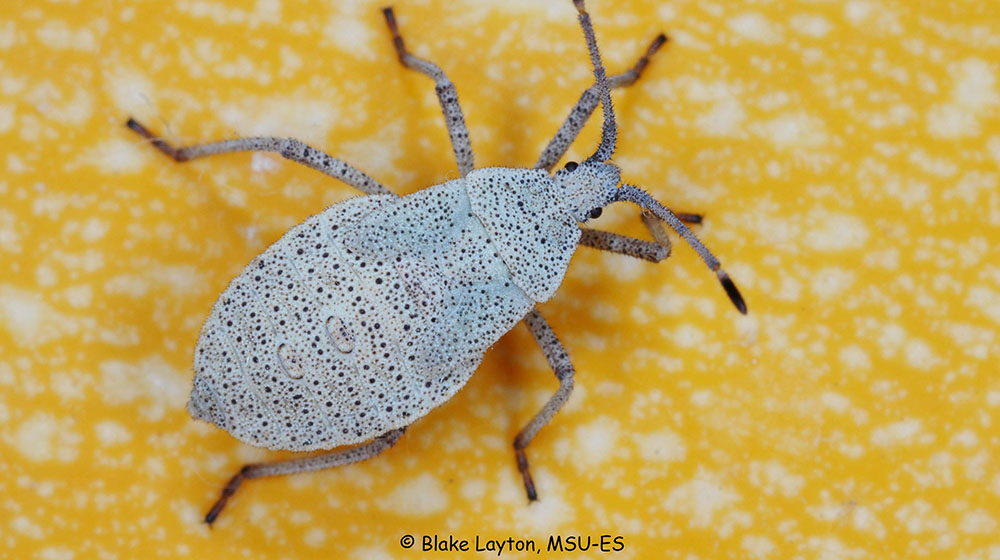Squash Bug, nymph, No 9
Related News
June 4, 2015
May 19, 2015
May 15, 2015
May 5, 2015
April 24, 2015

Squash Bug, nymph
Anasa tristis
Order: Hemiptera
Family: Coreidae
Squash bugs are one of the most important pests of squash and pumpkins, and they often damage melons as well. Adults are brown or dark grey in color, while the nymphs are ash grey. Heavy infestations can cause whole plants to suddenly wilt and die. The plant looked fine yesterday, but not today. Both adults and nymphs concentrate at the base of plants. As they feed on the sap with their piercing/sucking mouthparts, squash bugs inject their saliva into the plant. This saliva is toxic and heavy squash bug feeding can cause “squash bug wilt.” Lighter infestations that are not heavy enough to kill plants can still result in poor growth and reduced yields. Squash bugs also vector an important bacterial disease known as curcurbit yellow vine decline.
Control: Control squash bugs in home vegetable gardens with sprays containing permethrin (1 day PHI) or bifenthrin (3 day PHI). The longer preharvest interval of bifenthrin means it is suitable for pumpkins and winter squash, but not for zucchini and yellow squash. Direct sprays to the base of the plant where adults and older nymphs are concentrated, as well as to the leaves, where egg masses and newly hatched nymphs occur. These sprays will also control squash vine borers. There are no good organic treatments for squash bugs, but regular hand-picking of adults, nymphs, and egg masses can be helpful if one only has a few plants.
See pages 7-8, and pages 12-14 of Extension Publication 2347, Insect Pests of the Home Vegetable Garden for more information on squash bugs.
Blake Layton, Extension Entomology Specialist, Mississippi State University Extension Service.
The information given here is for educational purposes only. Always read and follow current label directions. Specific commercial products are mentioned as examples only and reference to specific products or trade names is made with the understanding that no discrimination is intended to other products that may also be suitable and appropriately labeled.